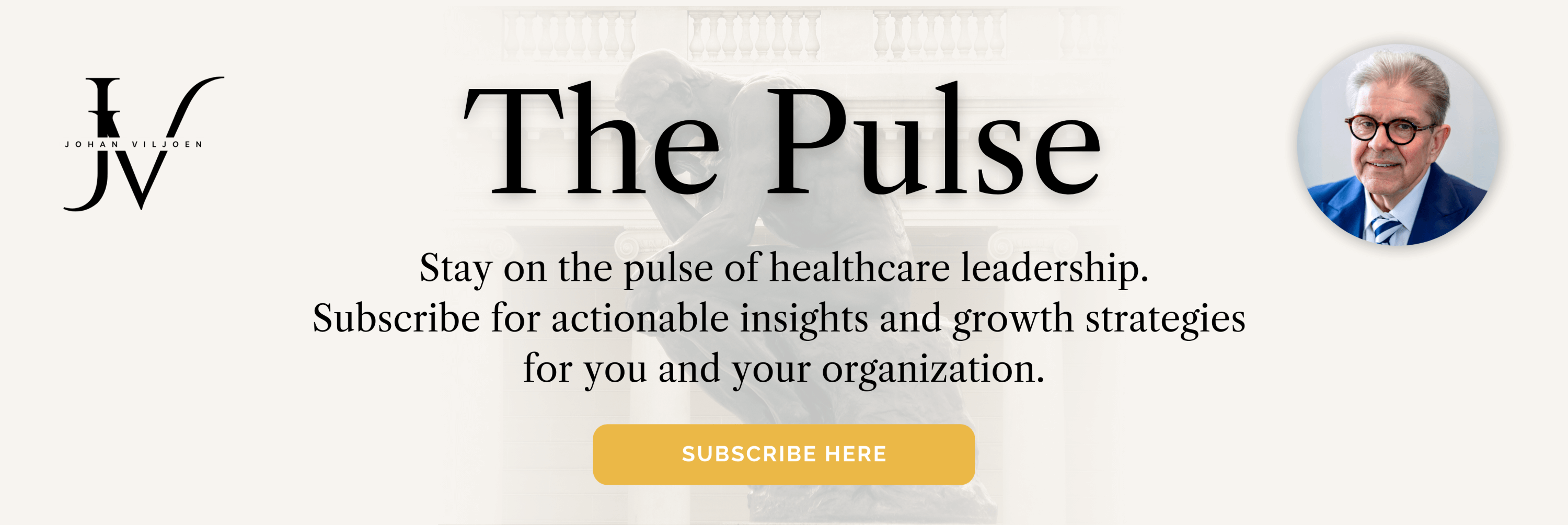Sometimes or maybe often or maybe all the time, it can be the path of least resistance to live in denial. Someone close to me has a humorous approach to this regarding their health. They live by the philosophy that as long as you are feeling well, to avoid "looking under the hood" lest you find something that cannot be ignored. Unfortunately that may have repercussions when you least expect or want it to. This anecdote may resonate with many in a high demand leadership environment. You are somewhat aware that there is a problem, but you are reluctant to address it for all kinds of reasons and the default becomes denial.
After denial wears thin, we often reach out to a trusted advisor or mentor and may get a quick fix that manages the problem of the moment for the moment. So, here is the alternative to consider that will equip you for the long run.
The process of coaching will provide the safe environment for you to take that first crucial step of facing up to uncomfortable truths about the realities that have brought you to where you do not want to be. Through reflective questioning you will gain clarity about the obstacles that have led to frustration, stagnation and repetitive cycles of failure that have prevented you from getting where you want to be.
For the reflective coaching process to create genuine value, requires whole hearted commitment This process will be a transformative experience if you accept the challenge to peel back the layers of existing perceptions about your challenges and where you fit into the narrative..
Let us look at some examples:
1. What do you perceive to be the barriers that are preventing you from getting beyond the situation you want to move on from?
This line of questioning will guide reflection into all the perceptions, fears, habits and beliefs and seek to separate perception and reality.
2. What do you see as the gap between the present and a desired future state?
This will identify the reality and nature of the gap and help to identify the steps needed and inform the development of a realistic actionable path forward. Unless we are completely honest at the front end about the issues we want to manage, there cannot be a successful end result.
3. What uncomfortable emotions are you avoiding in dealing with challenges?
Paramount amongst culprit emotions, is avoidance. Avoidance breeds procrastination and denial.
4. What do you think you need to become to get to your desired outcome?
This will facilitate exploration of the uncomfortable need to look at what we need to be to enable what we need to do.
5. What patterns are you aware of in unsuccessful attempts to effect change?
Unless one honestly faces the realties of failed attempts , you cannot plan to avoid those and history will repeat itself.
The courage to face uncomfortable truths and the discomfort that comes with that, is where growth and forward progress begins.
I encourage you to ponder these examples and I invite you to connect for a discovery call. I know first hand that leadership in health care is a difficult path to walk and that most systems are so focused on keeping the institutions running that providing a space and a mechanism to support leaders is not front of mind.
Reach out. I might just be able to help you gain a new perspective.Sometimes changing our perspective can be the tipping point towards changing our path.
Take care.
Johan
One of the benefits of a long career is the narrative you create as you go and when you reach a point where your focus changes as to how you wish to direct your future and how it might contribute to those around you, you do have a wealth of experiences to share.I am sure there are many colleagues in health care that can relate to my experiences and to be honest , not all of them were necessarily positive.
Reflecting upon my leadership experiences both as a leader and being led, there are many things in both those spheres of experience where I would have wanted a do-over opportunity. Life however does not come with rehearsal opportunities. Fortunately it is also not a one act play.
In my early career I was often subjected to the tantrums of the instrument throwing chief surgeon or the silent secret agent type who was always out to trip you up.There were also those wise men and women who just seemed to know when you needed a shoulder to lean on or a nudge away from making a mistake. So what was the difference between the former two and the latter? Empathy and humanity.
Let us consider the essentials of leading with empathy and humanity.
1. Active listening and reflective listening:
This is very much an acquired skill and sadly particularly absent in current times ,because it seems that it has become impossible not to have your eye wander to one device or another. and thinking multi tasking is either an asset or worse yet, acceptable. For you to be an active listener, you need to be present, focused, interacting, responding and remembering what is being communicated. When people interact with you as their leader, they deserve that and not a side glance. Reflective listening is an even finer skill. I often found that in health care and it may translate to other environments, we are always focused on problem solving and we default into that mode when someone comes for advice. How about reflective listening? Listen, acknowledge, clarify and encourage individuals to find a path to a solution they actually have just not unlocked yet. No fish, teach to fish!
2. Emotional awareness:
This is a crucial skill if not a state of being for a leader. If we have worked this out for ourselves as leaders and really understand how our emotions effect those around us, it is crucial to remember that everyone around us and particularly those we lead also have emotions that need to be acknowledged and channelled. Sometimes you will be reached out to just for validation. Recognize that when it happens. Making sure someone feels heard does wonders.
3. Compassionate communication:
Believe me it takes a conscious decision to close the door, sit down, take a deep breath and speak softly and clearly and mind your tone and body language. For some this may come naturally, but for many it is an acquired skill.
4. Supportive environment:
Become the safe space where your team members come to express what they need to express and make sure they leave feeling validated, valued and most importantly that they can rely on confidentiality. Credibility is the currency of leadership.
5. Individuality:
Remember that we are all individuals with unique life experiences and frames of reference that inform how we lead and need to be led. Take time to get to know those you lead and work with and adapt how you lead by recognizing and acknowledging diversity in values, beliefs and thought processes.
6. Connections and relationships:
Looking back over time, the connections made with others and the lasting relationships one can still rely upon despite the passage of time and distance , all rest on mutual respect, trust and authenticity. Live that as a leader and your example will do all the work.
None of these attributes require brute strength or any display of power and authority. If you reflect on them, you will see soft human traits that with some conscious awareness and deliberate practice can change your perspective on leadership and ultimately the experience of those whom you lead. Working on developing these skills can be a very rewarding endeavour with a coach as partner. I regret not doing it myself much earlier in my leadership journey. Join me for a discovery call and let us see where it takes you.
Humanity and empathy as a leader. It is not weakness.Remember, you are a human leading humans.
Until next week.
In recent years there has been mounting awareness about the detrimental effects of toxic work environments and the profound negative impact on the culture within an organization and by extension the people in the organization. At a minimum it effects productivity and extends to what organizations should be focused on as much as any bottom line, employee mental health and physical wellness. There is a wealth of evidence linking workplace toxicity to poor morale, high employee turnover, poor professional performance and devastating mental health outcomes. Why , in the face of compelling evidence, is this tolerated? Let us examine some of the contributing factors.
1. The normalization of toxicity
No matter the industry or professional environment, toxic workplaces exist everywhere.. Health care is not exempt.The danger lies in how insidious it is. Starts with small micro aggressions and what may be justified as jokes just at the fringes of professional appropriateness and if not recognized and stopped in its tracks, will become the culture of the organization and unfortunately, if the leadership sets the example, it may be seen and become how individuals think the road to personal success looks. The dividing line between healthy corporate behaviour and toxic sludge ,becomes blurred and you become known for the culture you allowed.
2. Fear of repercussion
Toxic behaviour can become a weapon. The power of the workplace bully, no matter how high up in the ranks of the organization, can be soul destroying and go unchecked because no one wants to risk the nuclear explosion that may ensue if a concern or complaint is raised. The fear of repercussion is real. Particularly if the escalation path runs through a perpetrator of such behaviour. The fear of labeling, loss of relationships and loss of employment are very real and without a safe mechanism to deal with this, the cycle will continue.
3. Leadership blindness
Every self aware individual will own the fact that they have blindspots. One may very well be a contributor to organizational toxicity and not even realize it. Leaders need a highly developed sense of how their behaviour, communication style and leadership style is experienced by others and the impact it has. One of the most devastating situations can arise where a leader sees behaviours like micromanagement, bullying or even favoritism as actual tools to achieve results. Blindness of this nature unfortunately becomes the example to the organization.
4. Workplace policies either unclear or simply empty words
It is hard to believe that in this day and age any organization would not have some iteration or other of a Code of Conduct , a Whistle Blower Policy or at least respect for Labour Legislation. It is a realty that these gaps exist. If the policies do exist, use them appropriately and for goodness sake, zero tolerance must be zero tolerance!
5. Performance over people
Let me be clear. Performance and meeting standards of care and maintaining the drive towards raising standards of care and how patients experience their care is not negotiable and must be the driving motivation to come to work. However, when we lose sight of the fact that health care providers and leaders are human beings and we leverage toxic leadership behaviour under the guise of needing to drive KPI's, we have lost sight of the dire need for humanity as a leadership trait.
6. Inadequate support
Every strategic plan lists mental wellness and caring about its teams and that is great. The reality is that it often does not go beyond lip service. The health care environment is tough and leadership can become a very lonely place. Just because someone has a title, does not mean they don't need support. Awareness and compassionate action is the answer.
Workplace toxicity is one of the most frequent reasons why health care leaders from every level of leadership reach out for coaching and listening to the often gut wrenching experiences, prompted this blog. We have all been or currently are in some variation of a toxic workplace or relationship that can be detrimental on many levels.
I truly understand how that makes you feel and how it turns your perspective upside down and inside out.
I am sincerely dedicated to help health care leadership colleagues. You may be uncertain or even sceptical about how a coach can make a difference and I get that. I was there as well. If you feel embattled, I invite you to reach out for a discovery call. You might just move on after that or maybe I can help. Most importantly, don't let workplace toxicity destroy your soul
Take care until next week.
leaders in health care face unique and multifaceted challenges that can impede their effectiveness and growth. Engaging with a professional coach can assist you in realizing and unlocking the insights you have, but have not recognized as such. We all develop a certain level of blindness to the obvious when we get bogged down by a problem. Having a safe environment within which to work through barriers with the help of an unbiased coach is often as much as we need to have the fog lift.Here are the three most challenging issues that often prompt health care leaders to seek coaching:
1. Navigating Organizational Change:
Health care institutions are constantly evolving and the pandemic recovery has really created a sense of urgency in this regard., Whether it be through mergers, technological advancements, or policy shifts. Leaders are called upon to manage these transitions while maintaining operations as usual.
*How Coaching can help:
A coach can assist health care leaders in developing robust change management skills, creating strategic communication plans, and fostering a culture of adaptability within their teams.
2. Enhancing Team Performance and Collaboration
High-stakes environments demand dynamic teams and exceptional performance. Inspiring teams to identify, believe in and constructively work towards a common goal is the essence of leadership and because it involves humans, the road is one where personalities and conflicts will be factors to be navigated.
How Coaching can help:
Through coaching leaders can work through real life challenges in confidence with an actively listening partner and gain confidence in managing difficult communications and avoid being reactive.
3. Balancing Operational Efficiency with Quality Patient Care
Striking the right balance between operational efficiency and maintaining high standards of patient care is always a moving target in the health care world and once again the leadership is accountable.
How Coaching can help:
Coaches can help leaders to step back and take a high level view of the challenges they face and guide them in prioritization and working on solutions ,one issue at a time. Sometimes we need to be reminded and supported in recognizing that we don't have to solve every problem or at least not all at once.
---
Are you in such a spot? Are you ready to admit you need help to overcome these challenges and elevate your leadership skills? Why not schedule a discovery call. We might be a good fit to work together.
Successful coaching starts with a trusting relationship.For coaching to produce results, you have to be comfortable with the truth that will come from uncomfortable questions and be willing to commit to make changes and maybe even step outside your comfort zone. It is often tough to do and having a secure , confidential and non-judgemental partner makes it less daunting.
1. Trust: The Unseen Currency
At the heart of any effective coaching relationship lies trust. It’s the unseen currency that encourages open communication and creates a space for vulnerability that is so essential in finding the barrier to progress on every individual's leadership journey. As a coach, I understand the courage it takes to entrust your insecurities and aspirations to someone else. In return for your trust I offer a safe, judgment-free environment where your voice and vision are respected above all else.
2. Transparency:
From the get go, I commit to openness and honesty about the journey ahead. I will need the same from you.
3. Confidentiality:
Your personal and professional information is not just data; it’s a part of your identity and your life narrative. Protecting it is paramount, and I assure you that our conversations will remain confidential.
4.Consistency:
Trust grows with consistency. Success is built one session at a time. Showing up openminded and committed to deliverables agreed upon.
5. Results: The Tangible Proof
While trust sets the stage for a meaningful coaching relationship, results validate the investment. It will come from actionable strategies and measurable outcomes, ensuring that efforts go beyond aspirations but grounded in actual change and ultimately, growth.
6. Goal Setting:
Every coaching journey begins with a clear end goal. Together, we’ll define your short-term and long-term objectives, breaking them down into manageable tasks that gets you to where you want and need to be. Focusing step by step on what needs to change for your situation to change.
7.Accountability:
We all need a bit of a nudge sometimes. I’ll serve as both your cheerleader and your accountability partner, providing the structure and motivation necessary to stay on track.
8.Continuous Improvement:
Results are not a one-time event but an ongoing process. We’ll regularly review your progress, celebrate your successes, and recalibrate our strategies to navigate any challenges. This cycle of assessment and adjustment ensures that you are always moving forward.
9.A Synergistic Partnership
A trusting and results-focused coach/client relationship is not just a professional interaction; it’s a synergistic partnership. It’s a unique blend of empathy, expertise, and mutual commitment that leads to transformative change.
Your goals become my goals, your challenges my challenges, Let’s build something extraordinary together, one step, one breakthrough, and one success at a time.
Ready to take the next step?
Reach out today, and let’s start the conversation that could change your life.
---





